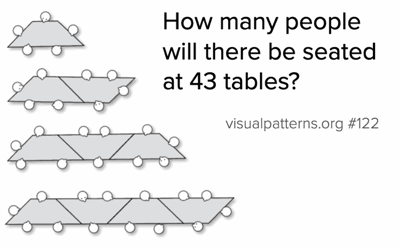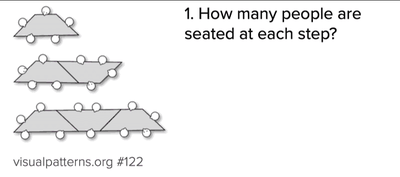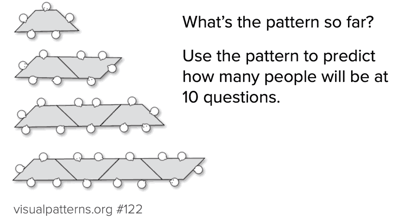Most of the time, I find myself trying to improve low-level questions. It seems like everything aims at the bottom of Bloom’s Taxonomy. But then I stumbled on the resources at Visual Patterns!
Here’s a sample question:

Now, this question asks for high-level thinking! But. It will also intimidate some (many?) students. (Heck, I used this with teachers during professional development and half of them wouldn’t even try!).
Now, Rookie Ian would have just simplified the question – but that robs my students of the chance to think! The key is to scaffold. I want to start with something simpler and work my way back up to the real problem.
Step 1
So, first, I’ll just show three tables. And all students have to do is count. Then they’d predict the fourth step.

See how easy that first question is to get started? Then asking for a prediction is less intimidating, too.
Step 2
Once a student answers that successfully, I finally give them the picture of the fourth table. They’ll cheer because they got the right answer. (Always build in chances for students to discover they were right.)
Now I can ask:

Step 3
Then, only once they can do that, would I give out that initial question.

In Summary
When we scaffold a high-level question, we’ll end up with more students who can answer that same question successfully. But everyone can still move along as quickly as they need to.



